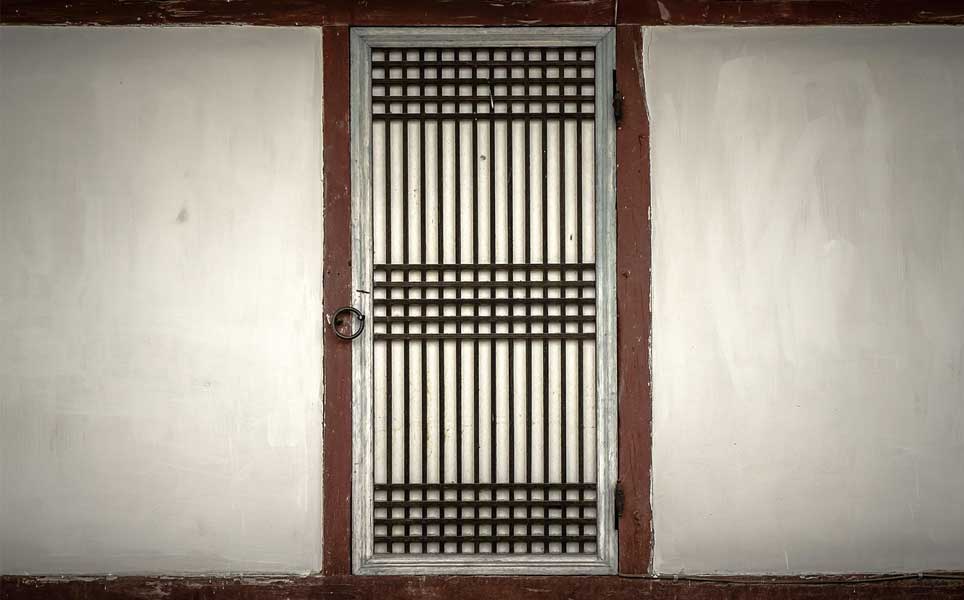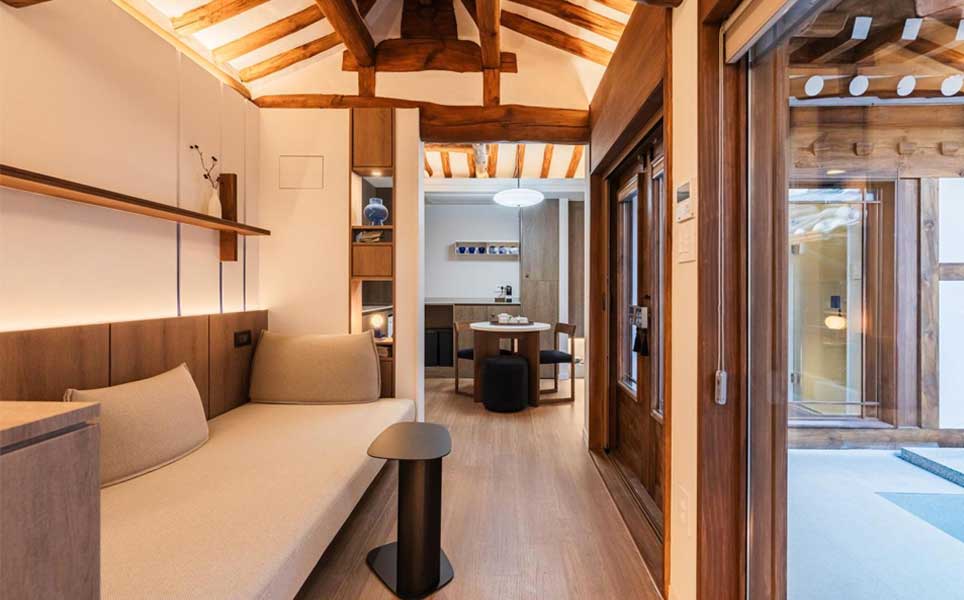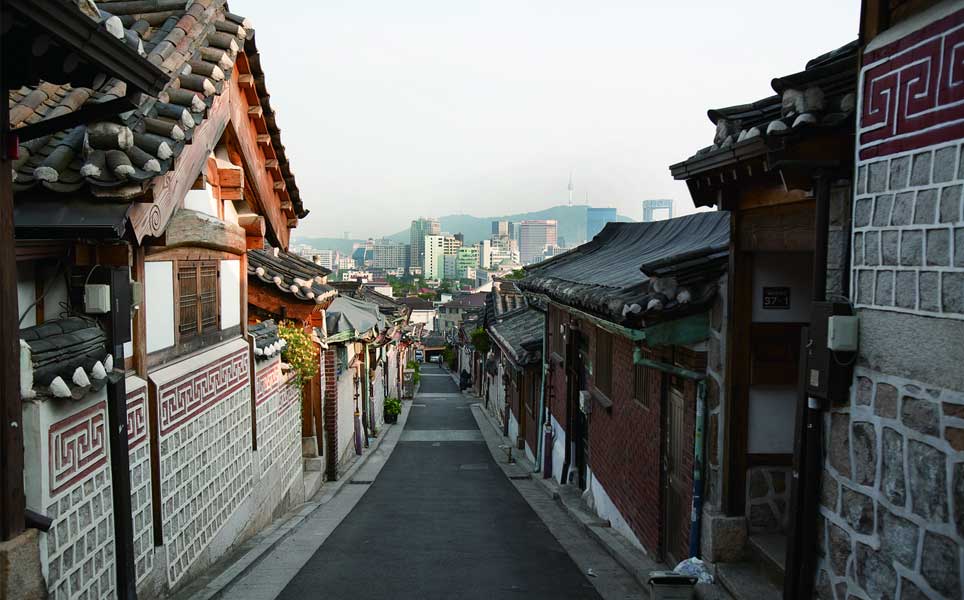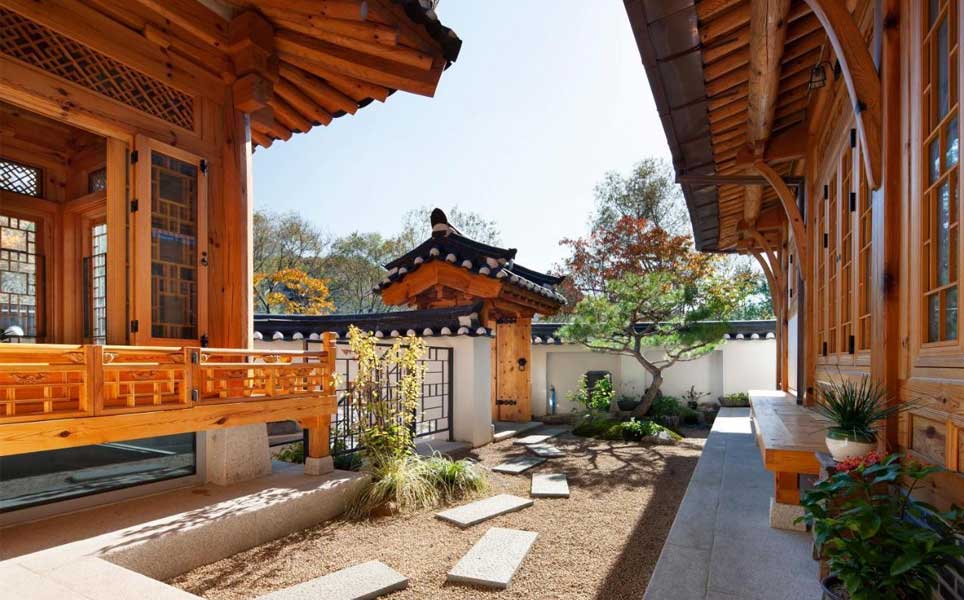As the night came, light once faded away from the narrow alleyway in Bukchon, Seoul, leaving its ancient houses quietly sit in darkness amid the city’s skyscrapers, dazzling and buzzing in the background. Today, however, with elegant curves and beautifully tiled roofs, these charming homes are no longer relics of history. Instead, they have now become the hottest properties for Seoul tourists craving authentic experiences, thanks to the Korea Hanok Stay program.
But wait. Have these Korea hanok stay programs been truly preserving Korean culture? Or has the viral trend been too commercializing heritage? Let’s unpack this intriguing dilemma.
Korea Hanok Stay Program: From Seoul Abandoned Relics to Premium Experiences
Not too long ago, traditional hanok homes, with their beautiful wooden and clay dwellings, were left to decay in the streets of Seoul. Owners considered them burdens, impractical relics incompatible with modern urban life.

Then something magical happened: the Korean government stepped in with financial incentives, and businesses turned these neglected hanoks into dreamy, Instagram-worthy accommodations. Today, premium hanok stays like the recently opened Blue Dot Stay operated by Proudlee in Jongno District boast modern amenities such as hardwood floors, saunas, stylish bathrooms, and even round-the-clock concierge service.

This magnificent shift had successfully saved the entire neighborhood from decay. And as Proudlee CEO Lee Dong Woo asserts, “Without hanok stays, there wouldn’t be very many hanok left.”
Preservation vs. Commercialization: A Complex Balance
On the other hand, not everyone welcomes this change. The growing popularity of the hanok stay program in South Korea has sparked criticism from those concerned about commercialization, overtourism, and the erosion of residents’ quality of life, especially in Seoul.
Iconic Bukchon Hanok Village has recently become the first Korean neighborhood to implement a tourist curfew, following complaints about noise, littering, and overcrowding.
But let us take a closer look at each perspective. Without the Korea Hanok Stay program, these Seoul historic homes risk being abandoned or demolished. Hanok stay programs create a profitable reason to meticulously restore heritage structures that might otherwise vanish.

High Standards Mean Better Preservation
There’s a fascinating aspect we should consider! Government regulations regarding the Korea hanok stay program can be quite strict, but that’s a good thing! As Bukchon Giwa CEO Jang Se Jin thoughtfully shares, “Before hanok stays, quick and minimal-cost repairs were the norm. Now, restoration focuses on tradition, meticulous attention to detail, and respecting the guidelines.”
Critics of commercialization play an essential role in maintaining high-quality restoration and preservation standards. And they have successfully helped safeguard this beautiful architectural heritage of South Korea.
Korea Hanok Stay Program Has Been Benefiting Seoul Locals
Not only that, but surprisingly, it turns out that Seoul locals—often portrayed as reluctant victims of the hanok craze—have been the ones actually benefiting from the viral trend of Korea hanok stay program.
Proudlee prioritizes hiring local retirees as cleaners and helpers, creating meaningful employment opportunities in the neighborhood. They explained that instead of criticizing the programs as the victims, most Seoul locals have been more than willing to work with the Korea hanok stay program, rather than against it.
Therefore, this symbiotic relationship actually fosters a sense of community pride, revitalizing neighborhoods and breathing life into spaces once deemed impractical and worthless.

Hanok Stay Program: A Cultural Savior – at least in Seoul
So, are Korea hanok stays good or bad? Well, the truth is a bit complicated, but there’s actually a lot to appreciate.
Yes, there are valid concerns about overtourism, noise, and commercialization. But on the other hand, the benefits of the program are equally significant. After all, Korea hanok stay program has successfully helped preserve Seoul rich cultural heritage and improve local communities.
As a result, thanks to this initiative, Seoul’s historic neighborhoods have now transformed from risk-filled ghost towns into lively cultural hotspots where tradition and luxury beautifully blend together.
“Hanoks in contemporary urban settings serve as true windows into Korea’s history and present-day culture.”
Proudlee.
The Key Lies in the Balance
Finally, Korea hanok stay program still comes with its share of mixed responses. However, all the benefits have actually been shining through the challenges.
Therefore, it is incredibly crucial to find that perfect balance between preserving these treasures and allowing for some modern flair. That is why thoughtful approaches like Bukchon’s curfew system and strong heritage preservation standards play a key role in achieving this harmony.
So, no matter where you stand—whether you lean towards criticism or appreciate preservation—there’s no denying that hanok stays have turned traditional Korean homes into cherished travel experiences.
Now, we’d love to know, which side actually speaks to you more?
Thinking of Staying in Hanok?
Here are some quick links to get you started:
- Try Blue Dot Stay in Bukchon (a fan-favorite for luxury meets tradition)
- Explore platforms like Butler.lee for curated hanok listings
- Wander around Jongno District to see where past and present collide
Related Posts
1,541 total views, 8 views today

















